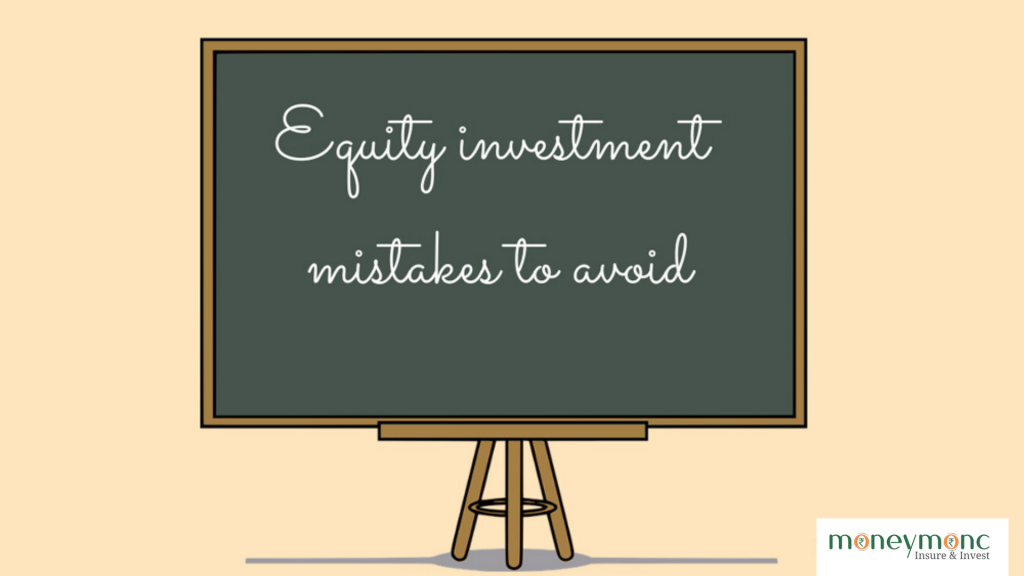Investment in equity, whether by buying directly or indirectly through equity mutual funds, is currently more popular than ever before. This trend is likely to persist given the continuation of the low interest rate regime by most of the world’s major central banks. To take advantage of this global equity tailwind, it is not only important for investors to make the right bets in the market but also avoid costly mistakes. Most often, investors lose money or make suboptimal returns because they ignore small things that have big consequences for their portfolio.
Here are five common mistakes that investors must avoid:
1. Buying a stock based on the news rather than its knowledge. Most often retail investors put in money in stocks because it’s in the news instead of deciding on their own conviction. But most often companies and stocks get into the front pages of the newspapers or on magazine covers when they are at the peak of their success. If you invest based on the news cycle then you will most often be buying a stock at its peak, greatly increasing your downside risk.
So as a thumb-rule avoid buying a stock if it’s getting too much good news.
And if it still looks attractive then check its price history and invest only if the potential upside is at least 20 percent or more.
2. Investing for a quick buck. According to various studies, most often retail investors lose money in the market or earn poor returns not because of lack of industry knowledge but due to short-term trade and blind actions. Stock prices are volatile and can vary a lot on a daily and weekly basis but equity is a long-term asset. Buy a stock or invest in an equity mutual fund only if you can stay invested for at least three years.
You also need to develop the mental toughness to stay invested even if the price falls in the short-term.
As a general rule follow a medium to long-term investment strategy and stay committed to it even if things are going against you in the short-term.
3. Trying to average out the price of a bad investment. The best of investors end-up making poor investment decisions. But what separates professional investors from amateurs is they don’t try to average out their entry price by buying even more of it when the stock price begins to fall.
If you are convinced about your investment then give it a predetermined time to start delivering returns, say a year.
But if the investment fails to deliver as anticipated then don’t hesitate to cut your losses and exit the investment. Staying invested in a bad asset hoping that it will deliver returns ultimately will hurt your portfolio even more. If you fail to get out of a bad asset you not only lose money but also lose time which in fact is the most valuable commodity in the financial market. This also deprives you of the better opportunity in the market that may more than make-up for your losses from a bad investment. So whenever you buy a stock, draw a timeline for it and if it fails to deliver in that time sell it without remorse.
4. Only buying the cheap or low priced stocks. It’s true that investors make money when they buy low and sell high. However, this doesn’t mean that you should only buy stocks with low trading prices and avoid those that quote in four digits or even higher.
The market price has little to do with a stock being cheap or expensive.
A company’s stock price is not only determined by its financial performance but also by its capital structure. In simple terms, share price is the market capitalization of a company divided by the number of shares issued by the company. Given this, a company’s share price may seem too low not because it’s less valuable but simply because it has too many shares either due to a large paid-up capital or though share splits.
Conversely, a company with a small paid-up capital and no share splits may have a very high share price. For example, Shree Cement share price is nearly 40 times that of Ambuja Cement even though its market cap is only 20 per cent higher. Keep these nuances in mind while assessing the relative price to two investment candidates.
When market experts talk of stock price they are either talking about its valuation such as price to earnings multiple and price to book value or they are talking about its historical price or in relation to its industry peers. As such, don’t hesitate to buy a stock that looks pricey but may actually be inexpensive in terms of valuation or in relation to its peers or on a historical basis.
5. Investing without a strategy. Experts say that investment in stocks is both art and science. There is no fool proof or a set way to become a successful investor. Every successful investor has his/her own strategy that they have developed and they use it to maximise gains. You also need to develop a strategy to pick an investment target and to book profits. For example, do you want to focus on value investing or would you stick to top stocks across a few top industries. Secondly, do you want to invest solely for capital or price returns or are you looking to earn recurring dividend income.
The final investment strategy that you follow should be consistent with your risk appetite, fund at your disposal and finally your investment goals.
An investment strategy will help you control your emotions in times of big market volatility and protect you from getting lost in the maze of investment choices available in the market. Remember, there are nearly 4,000 stocks actively traded on BSE and each of them is unique in its own way. So when you are building a portfolio pick stocks that fit in your strategy.
Happy Investing!
(Advice: This article is for information purpose only. Readers are advised to consult a certified financial advisor before making investment in any of the funds or securities mentioned above.)
(Karan Deo Sharma is a Mumbai-based finance and equity markets specialist).
(This article is in syndication with 30stades.com)


